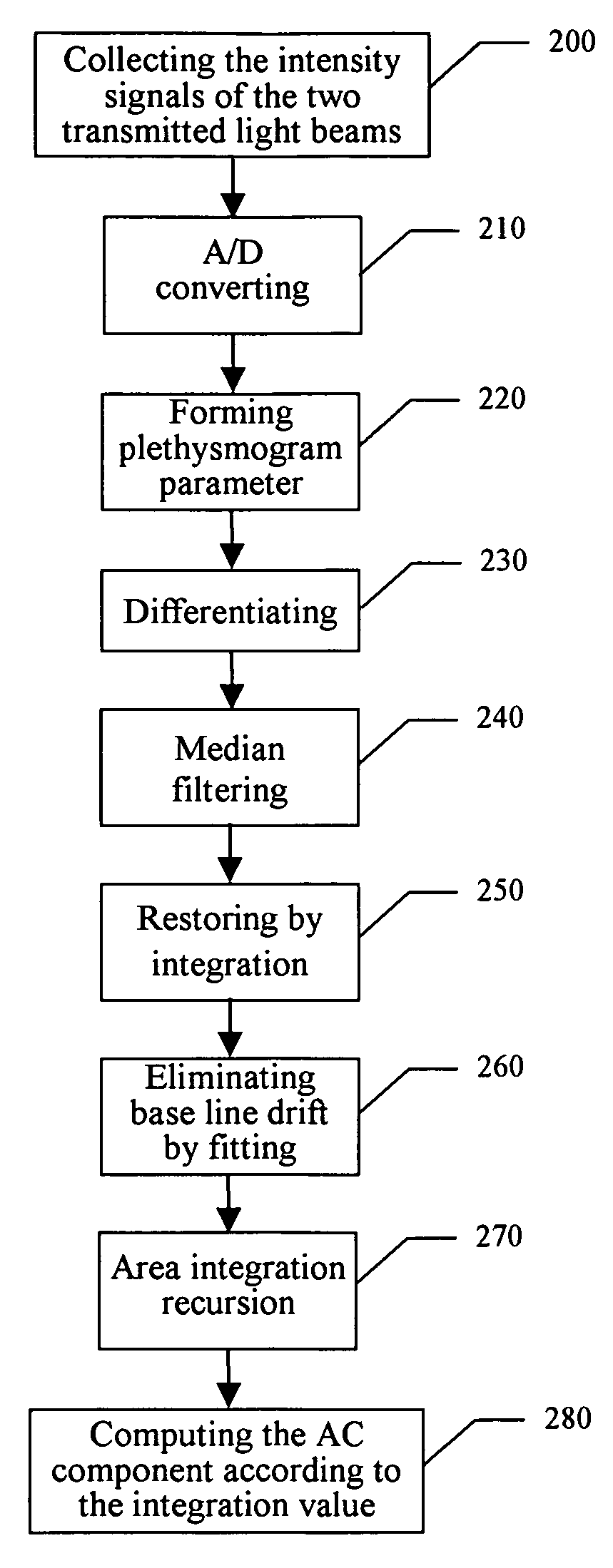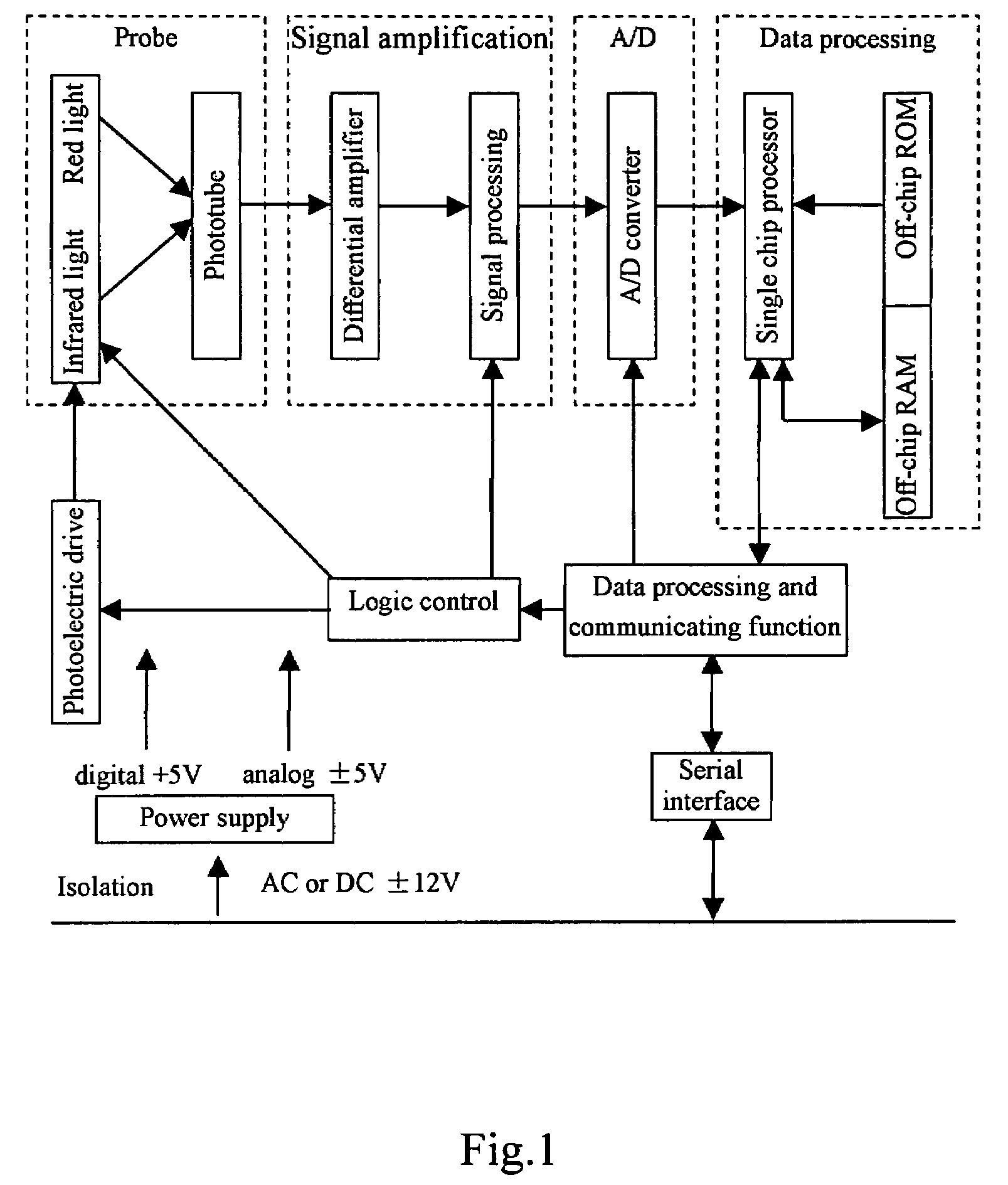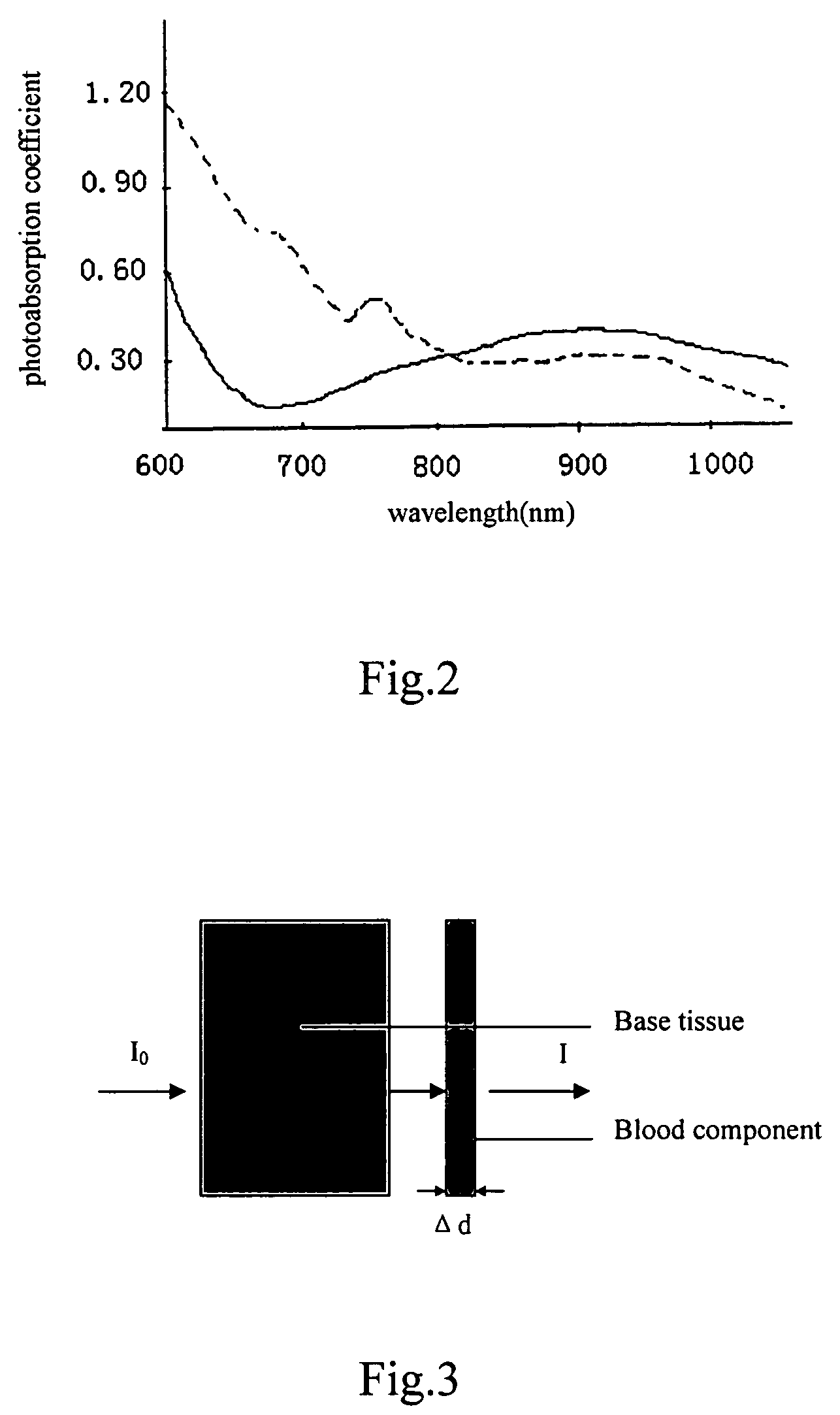Method and apparatus for eliminating interference in pulse oxygen measurement
a technology of oxygen saturation measurement and interference, which is applied in the field of methods and apparatus for eliminating interference in oxygen saturation measurement, can solve the problems of low signal-to-noise ratio, measurement of waveform, and measurement of ac component to dc component, so as to improve measurement accuracy, eliminate non-white noise from noise, and improve measurement
- Summary
- Abstract
- Description
- Claims
- Application Information
AI Technical Summary
Benefits of technology
Problems solved by technology
Method used
Image
Examples
Embodiment Construction
[0062]Two light beams (usually the red light and the infrared light, which are taken as an example for illustrating the present embodiment) are emitted to transmit through the terminals of a biologic tissue (e.g., foot or hand) or other portions, and the transmitted light of the two light beams are received and subjected to photoelectric conversion and analog-to-digital conversion (or may not subjected to the analog-to-digital conversion, but directly processed as analog signals). The measured data of the two light beams having been normalized, the DC ratio
[0063]IrDCRedDC
of the two light beams can be obtained thereafter. The normalized plethysmogram waveform may be considered as a combination of a waveform in an ideal case and a noise, while the plethysmogram waveform in an ideal case, regardless of the red light waveform or the infrared light waveform, may be regarded as the synthesis of sine waves in different frequency bands:
Red=a0 cos(ωt)+a1 cos(2ωt)+ . . . +an-1 cos(ωt)+nRed=Re...
PUM
 Login to View More
Login to View More Abstract
Description
Claims
Application Information
 Login to View More
Login to View More - R&D
- Intellectual Property
- Life Sciences
- Materials
- Tech Scout
- Unparalleled Data Quality
- Higher Quality Content
- 60% Fewer Hallucinations
Browse by: Latest US Patents, China's latest patents, Technical Efficacy Thesaurus, Application Domain, Technology Topic, Popular Technical Reports.
© 2025 PatSnap. All rights reserved.Legal|Privacy policy|Modern Slavery Act Transparency Statement|Sitemap|About US| Contact US: help@patsnap.com



